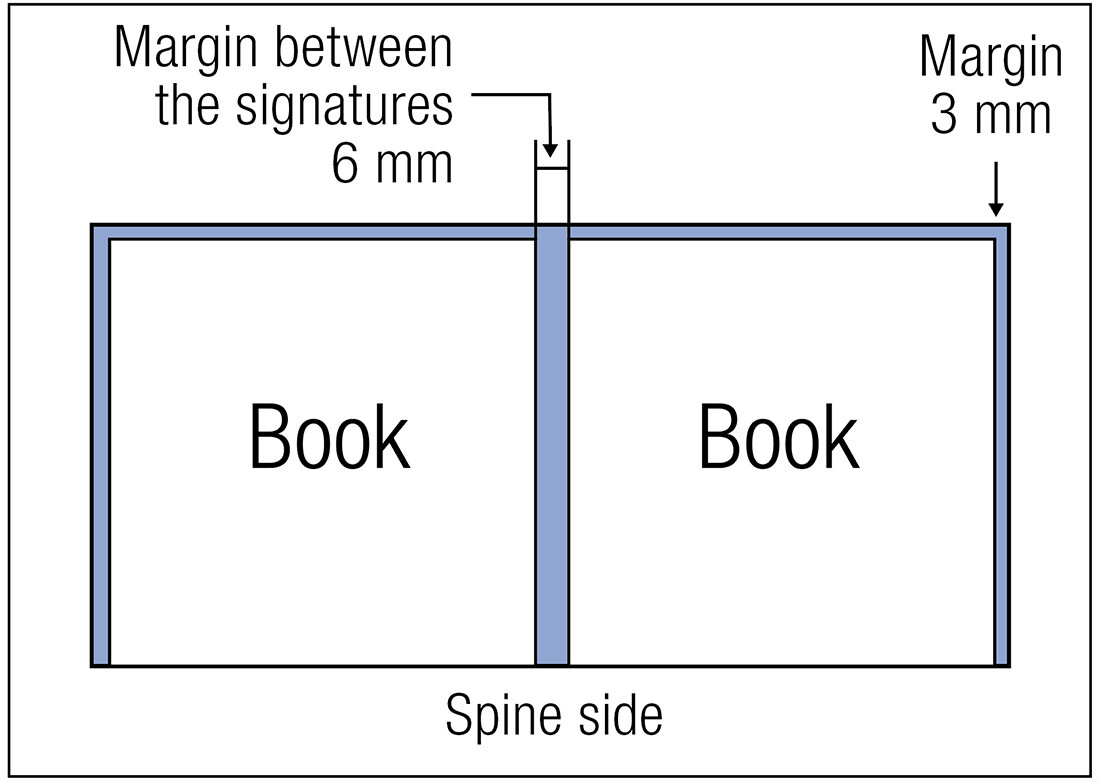
Arrangement before cutting with two-signature binding
In two-signature binding using saddle stitching or perfect binding, several sections are stacked and then cut into single signatures and finished up to trimming. A flat cutting machine is often used for small lots, and problems such as breaking of the spine can occur.
The trimming widths with two signatures joined are almost always designed to be 3 mm on the top, bottom and edge and 3 mm each between the signatures for a total of 6 mm, the same as general binding.
Cutting with stability and precision depends on conditions such as paper grade and cutting order. The first cut is in the middle of the 6 mm between the signatures. Cut into two single signatures, and then cut off the three margins. The number of tasks is increased, but the load on the book's spine is reduced and the finished book looks good.
Also, when cutting multiple stacked sections, some operators put unneeded books or a bundle of paper under the lowest section to be cut. By doing this, cutting scrap easily moves away from the cut and stress on the lowest volume is reduced.
Putting the back of the book on the table facing left or right is also important. The blade comes down swinging to either the left or right. The direction might greatly influence cutting. Test with various grades of paper.
















